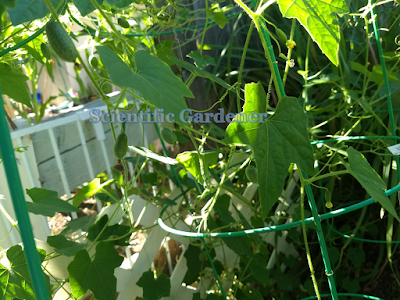Friday, July 2, 2021
Complimenting Covid Coverings with Completely Creative Cucumber Clothing
Friday, June 25, 2021
Long Dark Armenian Cucumber 2020
Friday, June 18, 2021
The Backyard Mexican Sour Gherkins take over
Growing the Mexican Sour Gherkin this year was a relatively new concept for me. I had never grown Melothria scabra and I figured that it may do good in rotation with the other plants that I grew out in my garden. I had one friend tell me that he couldn’t get enough of them while some of the reviews that I previously read described the outer skin as a tough rind and the inner skin as having texture akin to snot. Given the fact that everyone was purchasing these seeds from me, I decided that it was worth it to at least give the plants a try.
The
plants mature slowly though will grow rapidly later in the season and
will often produce tuberous roots that can be used to grow out plants in
subsequent years.
The
Melothria scabra, which originates in Mexico, has many names, including
Sandita or Sandia de Raton, Mouse Melon, Mexican Sour Gherkin or
Cucamelon. Many companies will sell Melothria scabra by one of these
names, but for the most part they are all Melothria scabra.
My
first taste of cucamelon made me think of something crunchy, yet juicy,
with a somewhat tolerable inner texture, a taste of melon rind and a
slight hint of acidity akin to a lemon. While the leaves and fruit are
cute, those factors may not be enough to redeem it. I can only imagine
that there are plenty of individuals who, only being familiar with the
taste and texture of regular cucumbers – feel that this kind of cucumber
wonderful. However, having grown multiple Carosello varieties that
exceed these grape-sized crunchy fruits in every way, I was left feeling
a little like “Meh”.
So here is my opinion of the cucamelon, from 0-10, 0 being worst and 10 being the best. Taste: 4 (better than Diva – which to me tastes like grass), Texture: 3 (tolerable) Staying power: 9+, Other interesting attributes: 7


























































































































